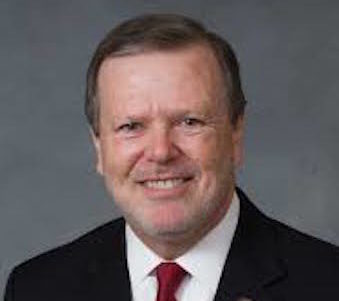At the press conference to announce the signing of the COVID-19 bills held by Gov. Roy Cooper and legislative leaders on Monday, May 4, it appeared the folks in Raleigh were getting along.
However, on Tuesday, May 5, all of that conviviality was gone and Senate President Pro Tem Sen. Phil Berger sent out a blistering press release about Cooper’s decision to impose the Phase 1 stay-at-home restrictions on the state beginning on Friday, May 8.
Berger notes that the people of North Carolina were told the reason that the economy had to be shut down was to “flatten the curve” to avoid a spike in COVID-19 cases that would overwhelm hospitals in the state.
Secretary of the North Carolina Department of Health and Human Services Dr. Mandy Cohen has said repeatedly, “We have flattened the curve.” In answer to a question about a possible spike after implementing Phase 1, Cohen said that the state had plenty of hospital capacity not just in acute care but also in intensive care beds. She said that a spike of hundred cases could be handled.
In the press release, Berger stated, “Gov. Cooper’s announcement today is largely a continuation of the existing lockdown. A statewide stay-at-home order still remains in place, and nearly every business that applied for essential status has already been operating at limited capacity so long as they practice social distancing.
“We were told ‘flattening the curve’ to prevent overloading hospitals justified a lockdown. Hospitals are not overloaded, and in fact they’re laying people off.
“So what is the theory to support this plan – eliminate infections or just delay them? Gov. Cooper apparently disagrees with Colorado’s Democratic Governor and others who say that a continuing shutdown will not cause a peak in COVID-19 cases to be any less severe, it will only push it down the line.
“Today in North Carolina, over half of our counties comprise less than 10% of confirmed cases. Why is a blanket, on-size-fits-all statewide order justified? I’m concerned that Gov. Cooper is ignoring more reasonable approaches and the experience of the majority of the states.”


I agree with Berger. It’s hard to justify that restaurants and barbers should continue being shut down in Western NC and rural counties in other parts of the state.
I want a class action suit,,. I have been denied entry to camp a
Lone in elk knob state park. Who is a valid attny.
Statistics (facts) that I have mentioned indicate that this whole thing is a big scare tactic so that our Govt leaders(?), can “do something” to protect us. This is government by decree. Considering some of the draconian treatment by some police around the country, it actually looks like martial law, doesn’t it? Younger people who really don’t know what is going on support these restrictive measures. They really don’t know any better.
“Too old, to soon, to late, smart.”
My opinion is that the LEFT wants to maintain these restrictions to wreck as much economic destruction and individual suffering in order to win the election in November. Then Big Brother will really take care of us, as long as we do what He says.
I’m with you. I think this has a lot to do with the 2020 elections. Covid-19 is real, but we have had worse and the nation did not shut down. There is a dark agenda behind this in my opinion.
Phil, just in case you have forgotten, you are a lawyer. It will take legal action to compel Cooper to act. This is what lawyers do. File a suit against the governor.
Because he is Democrat periot.
I’m in agreement with Phil. I would love to see Phil file a lawsuit. Maybe Roy would wake up. Action needs to be taken immediately. This has already gone way too far. We need to be in Phase-Over, not Phase-1, and get our people and our economy back to work. I’m at the point I believe people should just do it. Go back to work. It is “We The People” and we are not under Marshal law. “We” are in control, if “We” will step up and take it back.
Since it is obvious that Cooper and his wife are getting haircuts (and possibly – gasp – dye jobs) while we peasants are getting shaggier and grayer by the day, and since Cooper is not concerned with procuring paper towels and cleaning products, and since Cooper gets his meals prepared in house (I doubt the missus is trying to find chicken and ground beef), he doesn’t give a flying flip. Go to the ABC store and pick up bottles that god knows who has handled, but don’t go to a bar and have a pint. Go to Publix to buy “essentials” like beer and wine with 30 other people, but don’t get a manicure by one person who wears a mask and gloves! Makes perfect sense to me. Let’s put the self-employed hairdressers and salon techs out of business but keep those ABC stores hopping. I will not wear a mask, I will not shop where masks are required, I will continue to go where I want, when I want. I don’t need permission to leave my home.
You said it!